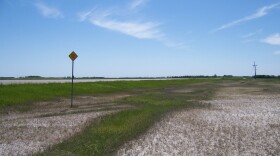The Geminids Meteor Shower is coming up soon, as is the Ursids Meteor Shower. Although we are coming up on a full moon on December 15, which will interfere with visibility of some of the weaker meteors, these meteor showers are still worth checking out.
The Geminids Meteor Shower runs annually from December 7-17 as the earth passes through debris from the asteroid 3200 Phaethon. It is considered by many to be the best shower of the year with perhaps up to 120 meteors per hour during the peak viewing period, which will occur on the evening of December 13 and early hours of December 14. As the name implies, the meteors will appear to originate within the constellation Gemini.
Then beginning on December 17 and running through December 25 is the Ursids Meteor Shower as the earth passes through the debris field of Comet Tuttle. This is a much less impressive meteor shower with perhaps only 5-10 meteors per hour during the peak viewing period which will occur on the night of December 21 and early December 22. There will be a waning gibbous moon on that evening, which will interfere a bit with viewing. These meteors will appear to originate within the constellation Ursa Minor, the little dipper.
Most meteor showers are caused by the debris from comets. Comets have been described as masses of ice, rock, and dust a few miles in diameter that orbit the sun and are remnants of when the solar system was formed. As they pass near the sun the heat causes them to shed debris. When the earth passes through these debris fields, the particles become glowing hot. Viewed from earth, these meteors look to us like falling stars or shooting stars. Asteroids, as in the Geminids, are a little different in composition and other factors, but still produce meteors.
Historically, meteors were not scientifically understood. In Greek mythology they were thought to be stones thrown down at the earth when Zeus was mad. Some cultures viewed them as bad omens, or perhaps divine messages. Others viewed them as the passing of souls of people that had died. And of course, somewhere along the line we learned that we should make a wish upon seeing one.
There are several meteor showers each year. A good source of information on them is the Sea and Sky Astronomy Calendar of Celestial Events.





